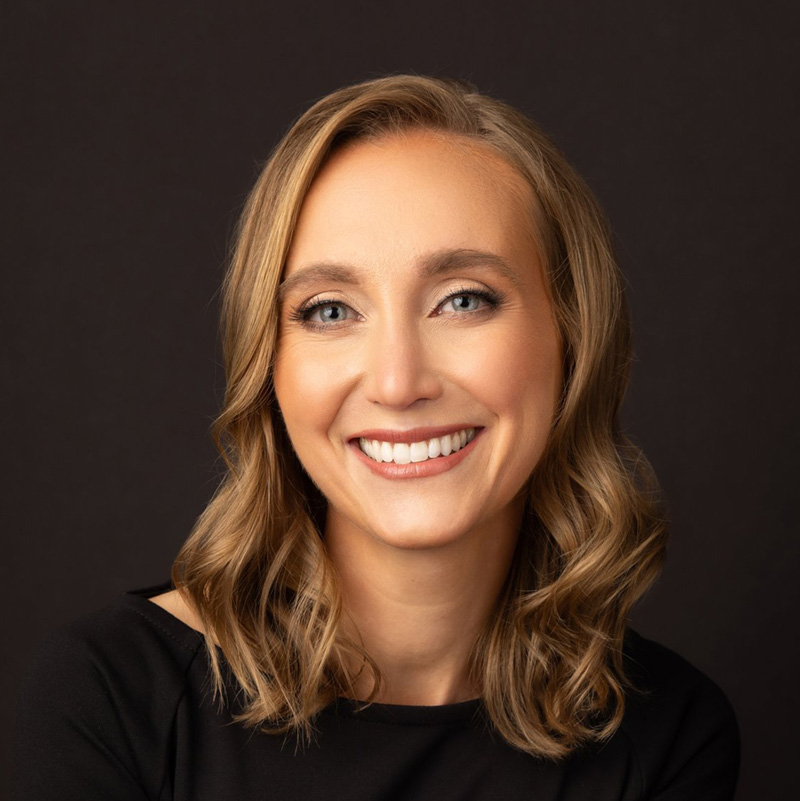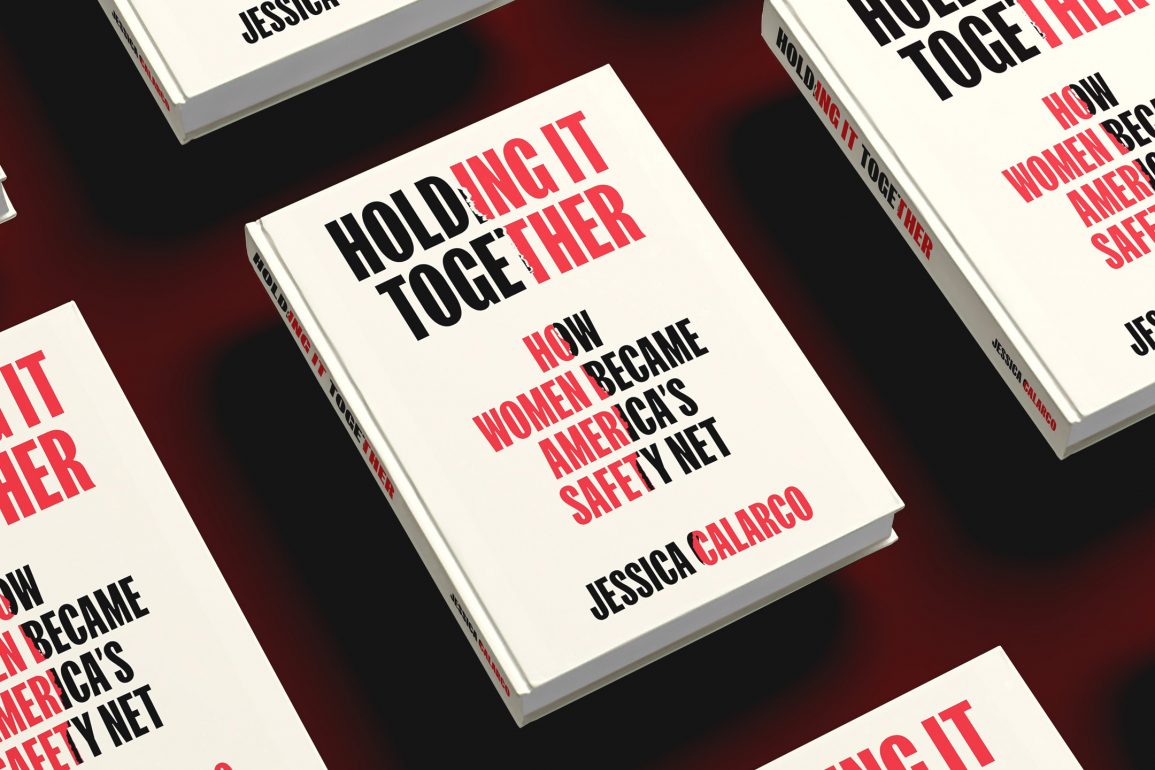Jessica Calarco is onto something.
There’s a reason why women in this country feel that so much pressure rests on their shoulders, that parenting is hard, that too many expectations are heaped onto them and that if they don’t hold everything together Macgyver-like with pluck, grit, duct tape and dental floss, their worlds could fall apart.
The reason is because it’s true. Maybe not the part about the duct tape, but the reason so many women feel they must take on so much work and caregiving is that the United States doesn’t have a robust social safety net the way many other industrialized countries do. We have no federal child care infrastructure and no federal paid family leave plan. We’ve skipped over the safety net chapter on how to run a country and instead, we rely on women to pick up the slack.
Calarco, who works as an associate professor of sociology at the University of Wisconsin, made headlines in November 2020 when her quote: “Other Countries Have Social Safety Nets; The U.S. Has Women” went viral. It resonated while still getting to the heart of what makes being a caregiver in this country so incredibly frustrating: it’s hard, it’s time-consuming and women are expected to do it while being given no support, financial or otherwise. It also served as the basis for Calarco’s new book, “Holding It Together: How Women Became America’s Safety Net.”
Calarco spoke with Early Learning Nation about everything from the outdated Supermom myth to the role humor plays in perpetuating misogynistic stereotypes.
A lightly edited and condensed Q+A is below.
Rebecca Gale: Your book talks about the United States’ insistence on maintaining the illusion of a DIY society – that each of us should make our own decisions and take care of our problems without help from anyone else. But given that people actually need caregiving support at some point in their lives, why do you think this illusion has endured for such a long time?

Jessica Calarco: This DIY society is beneficial for the billionaires and big corporations and their supporters who profit from maintaining this idea and the illusion that we don’t need a social safety net. Think of the big universal systems – child care, health care – they cost money. Who is paying the costs? We would be raising taxes on very wealthy people and corporations, which is threatening to people as it reduces social inequality in ways that manipulate the rest of us: exploitation. They have an interest in maintaining the illusion that we can get by without maintaining a social safety net. There is this belief that goes along with supporting the DIY model that not having a social safety net makes us safer because we are likely to make better choices without that safety net.
Gale: Really?
Calarco: Yes, this is the idea of neoliberalism economically. It originated in Austria in the 1930s, then was imported to the U.S. for manufacturers to use to push back against New Deal policies. They were imported to the U.S. and used to train economists like Milton Friedman, who then went on to shape policy for decades.
Gale: So does this DIY model contribute to the way we value care and why women are expected to make up the difference?
Calarco: Part of this gets back to the DIY model. If we don’t have a social safety net like universal child care and universal health care, we still need those kinds of care. Within this kind of system, care work is too intensive to be profitable. This quickly becomes unsustainable, which means that it’s not ever going to work within our profit-based economic system, without high levels of government investment, charging high costs to consumers, or exploiting people and paying too little for their work.
We have pushed the labor-intensive work disproportionately onto women. You can see that in industries like child care, home health care, services, retail and house cleaning. And we push this onto people who are highly vulnerable: women, prisoners and immigrants. We have an interest in this DIY model: the more we create conditions where people are forced to take the job reinforces the perception that this job must be less valuable.
Women hold 70 percent of the lowest wage jobs. The jobs held by women get further devalued over time. We treat care work as the moral or emotional benefit that must make up for what is not paid. So, you have this system where women are earning far less than men do.
Gale: One framework you discuss in the book is that low-income women are unable to say no as they need the work, especially those in caregiving roles, so they say yes, even to situations that may be untenable to them.
Calarco: Yes, we see this especially for low-income women, disproportionately women of color, who have nowhere to turn for support. It is a two- way trap. I give the example of a woman named Patricia in the book. She’s a low-income Black mother who has a number of young children, also working a full-time job. She is carrying the burden on that front. She decides to cut back to working four days instead of five. Once her extended family finds out she has the day off, she winds up driving folks to the grocery store and doctors’ appointments. She wants to find a way to say no, but says ‘I’m their only hope.’
We have decimated communities so they have so few resources to go around. They know the people they love have nowhere else to turn. Patricia worries, ‘what if I need help one day?’ She ended up divorcing her partner, had five young kids at home, including newborn twins, and when she was home recovering from a c-section, she ended up needing that support from her network. She was glad she had not pushed them away at that moment and opted instead to help the other people around her as well.
Gale: You have an entire chapter devoted to this concept of “Good Choices Won’t Save Us.” I know that ties into the neoliberalism you mentioned earlier, but let’s unpack that further. Is the idea that if people made the right choices, they’d never have a need for a social safety net?
Calarco: Yes, exactly. This gets back to the idea of the Neoliberal myth of the DIY society. Neoliberal economic theory states that societies are better off without a social safety net because if people don’t have a net to protect them from risk, they will be less likely to engage in risky behavior. The less protection you have, the better choice you make. This has been fully debunked – a social safety net does protect people.
People are told, if you just make good choices, you will be fine: marriage, college, a STEM education, waiting to have kids. The appeal of that kind of mythology makes sense. In such a precarious world, it feels good to have a sense of agency. The problem is that correlation is not causation. The model that we have is based on the people who are able to make good choices. If someone is able to get married, buy a house, go to college and get a degree in a STEM field, they may have better outcomes but it most likely has to do with the fact that they had the privilege to make the decisions in the first place. It’s not that choices don’t matter, but we have to be cognizant of the level of privilege to make those choices that we equate with the path to success.
Gale: What about childbirth? That’s a pretty binary viewpoint. Plenty of people undergo all the risks involving gestating and birthing children, and have little control over those outcomes.
Calarco: This is why this kind of model deeply ignores that there are risks that good choices can’t manage. Whether it’s childbirth or environmental risks with climate change, there are plenty of risks we can’t manage as individuals. This kind of messaging runs the risk of gaslighting people. They should be able to figure out what the choices are and how to protect themselves from risk.
We see this with mothers and adverse outcomes in childbirth and child rearing. As if there is a right choice to make, and it’s your fault if you didn’t figure it out and make it.
Gale: Let’s talk about the sexism jokes. Your book explains that some men rely on humor to cover their own misogynistic tendencies, and you’ve posited that such humor actually makes things worse. Why is that?
Calarco: These were two pieces that were surprising to me. When I talked to men about the inequalities in their lives, they were quick to write it off as a joke. Even when they were making choices that looked deeply egalitarian, it was treated with a level of humor and a lack of seriousness.
I did a lot of reading and research on gender and sexism in the context of humor. Couching sexism in humor makes it more poisonous, because it becomes more palatable to men who can buy into the ideas without thinking of themselves as bad people. It also makes it harder for the women to push back. They’re told: ‘Stop being a nag. Can’t you lighten up?’
Sexist humor seems benign, though I would argue it can be deeply damaging. It is harder for women to push back in their context of the relationship and broader society they’re part of.
Gale: Can you give an example?
Calarco: Andrew Tate is a former Mixed Martial Arts fighter turned YouTuber who is banned from a number of different public platforms for his misognystic messaging, like ‘Women should be men’s property in marriage.’ One of the problems with that is that if he is able to write it off as a joke, it makes it harder for those who have been harmed by that rhetoric. It gives men an easier way to buy into the softer ideas by saying ‘at least I don’t believe the extreme version of it.’
Gale: My favorite chapter in your book is the one that concentrates on the Supermom Myth. Why do you think this myth persists, even as so much research and general wisdom seems to contradict that idea that women should be doing it all?
Calarco: We tell women in our society that they are the best protectors for children. If all else fails, it is their responsibility to make sure children are safe. In a society with a lot of risk, there’s a lot to protect them from.
This kind of messaging—where women are supposed to view motherhood as the top protector from the threats of the world—is that it primes them for fearmongering. It can persuade women that they need to go above and beyond. Some are cloaked in religious messaging like Critical Race Theory, or transgender kids and public schooling, or similar fear mongering along those lines.
It can take more secular forms too, like the fear of downward mobility; the idea that if you don’t get into the right college your life will be a disaster, or if you don’t have that investment banking job, your life will be ruined.
These fears can lead mothers to sacrifice themselves. Even if they have the resources for full-time child care, these fears can lead them to decide to stay home full time, believing that is the way to protect the child.
Gale: But why are mothers the ones to shoulder this burden?
Calarco: We have these twisted ideas about biology because women have historically done that work, as opposed to recognizing the socialization influences. For example, girls are trained to be mothers from the time they can hold a baby doll. All the evidence suggests that young girls are pushed into these responsibilities at a young level.
With early socialization, these roles get more ingrained and it becomes easier for women to do that work. In the Supermom Myth, if moms have the most experience managing the responsibility, it can feel threatening if dad isn’t doing it as well. One of the saddest things we found about the pandemic research was the way angry dads were exacerbating the situations at home.
We did a big national survey in September 2020, and asked how often are you yelling at your kids? For college-educated white fathers, the numbers were off the chart. Those are the dads that were able to work remotely during the pandemic. In couples where both parents could work remotely part of the time, dads didn’t have the experience of working for pay while caring for children, which led to high levels of frustration. In one example from the book, on the days a dad was home he was angry, yelling at the kids. He didn’t have that kind of experience to navigate the challenges, so the mom was deeply worried and took on all the child care herself.
Gale: When people read this book, and as you lay out all the concerns for the way we structure society so that an undue burden falls on women to act as the social safety net, what’s your takeaway?
Calarco: We have managed to maintain this illusion of a DIY society by pushing the risk and responsibilities onto women. Some women, often more privileged women, are able to push that risk onto underprivileged women. But the engineers and profiteers of this system have managed to persuade enough of us that the system works, which makes it incredibly hard to create the safety net that we need and deserve.
People are inclined to secure the resources to protect their own families even if it comes at the expense of others. We need to be up front about how a better social safety net could help to improve all of our lives – even as it reduces some of the inequalities between us.
My hope is that by understanding this system, it can help people see where this DIY model comes from and how it’s hurting all of us, especially women. We need to demand a system that can work better for everyone, and reject some of the myths that tend to delude and divide us.

Rebecca Gale
Rebecca Gale is a writer with the Better Life Lab at New America where she covers child care. Follow her on Instagram at @rebeccagalewriting, and subscribe to her Substack newsletter, "It Doesn't Have to Be This Hard."



